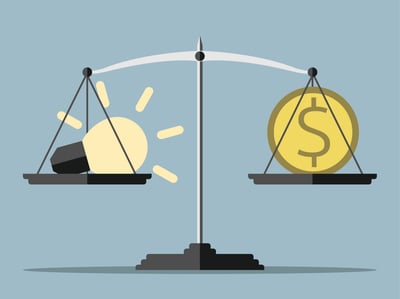March 8, 2023
 by Jessica Ruane / March 8, 2023
by Jessica Ruane / March 8, 2023

The generational divide in our society has never been more evident than it is today.
Every time a new app is released or an updated version of an iPhone becomes available, this gap grows wider and wider. These vast differences in values, culture, experiences, and communication can make managing a multigenerational workforce a challenge.
Is it possible to get such varied points of view to come together and unite as one team? We say yes, it is. Here’s how.
Many businesses today focus on hiring individuals based on how they will fit into the company's work culture. Additionally, they work on building a culture that respects the best of all generations. For example, many companies use employee communication software to personalize and deliver internal top-down communications, understanding that different people absorb information differently.
A multigenerational workforce includes employees from different generations, such as Baby Boomers, Generation X, Millennials, and Generation Z. Many organizations today work in such a setup, and managing such teams to ensure the business thrives requires special attention in most cases.
To understand this in more detail, we will need to focus on employee segmentation. Below is a list of each generation represented in the workplace right now.
Before we dive right into multigenerational workforce management with the right communication techniques, let's understand why it is important.
Workplace communication is the exchange of details between employees of an organization. This can include face-to-face conversations, emails, virtual meetings, and calls. Additionally, forms of non-verbal communication which are body language and tone of voice, are essential aspects of workplace communication.
Healthy communication in the workplace builds a positive work environment. It ensures employees have the necessary information to deliver completed projects and ask for help when required.
Communication between all levels of an organization and different generations of employees is vital to problem-solving and collaboration. It helps drive better results for organizations and improve human relationships. In order to lay out a successful multigenerational workplace communication strategy, it’s important to take a look at what different generations value.
Each generation has its own separate identity with its own distinct viewpoints, values, and attitudes toward work based on its life experiences. To successfully integrate these diverse generations into the workplace, companies will need to create a corporate culture that actively demonstrates respect and inclusion for its multigenerational workforce.
In order to do this, it’s important for managers to understand a few basic values each generation has and how these play into their communication styles.
This generation has often been characterized as “workaholics” who tend to put work before their personal lives in an all-or-nothing attempt at achieving personal gratification. Boomers have also been referred to as the “Me Generation.” While at first glance, it may appear that Boomers are a ruthlessly self-interested group who will stop at nothing to satisfy their limitless ambition, this generation actually has good reason to seek self-sufficiency.
Record inflation and the demise of the dot.com bubble have devastated the retirement savings of many Baby Boomer workers. For this reason, a staggering number of workers from this generation must now work into their retirement years to recoup their losses from these major financial setbacks. Because of this, Baby Boomers value ambition, monetary security, and self-sufficiency.
This group is also known as the “Latchkey Kids Generation”. This generation was brought up with record-breaking divorce rates and a mile-long slew of public political scandals, making them inherently suspicious and skeptical of authority figures.
This generation responds well to straightforward communication and yearns for a greater sense of freedom — do not try to micromanage them. They value a strong work-life balance and the ability to maintain their independence.
As the first generation in history to grow up with the internet since birth, Millennials naturally gravitate toward digital communication over phone calls or in-person meetings. They’re also the first global-centric generation and tend to value diversity, equity, inclusion (DEI), and purpose more than monetary compensation.
Even though this generation has been raised on a steady diet of memes, text messages, and hashtags, they’re not as one-dimensional as many might think. Millennials actually value life experiences over owning personal possessions.
To address the value system of the average Millennial in the workplace, companies must stress their mission statement and demonstrate that they’re out to do more than just turn a profit.
In recent years, Generation Z has stepped into the workforce. They are already demonstrating some critical differences from the Millennials. Most come with a multicultural mindset which makes them value diversity and inclusivity.
This generation is focused on learning about the future and what came before it. This means they are open to feedback from older peers and look forward to educating them about new ideas and tech innovations.
The cultural events have shaped the attitudes and values of the three distinct generations. This is reflected in their drastically different communication styles. Modern companies can deal with the generational gap by understanding different communication styles. This can be done by paying attention to:
For Millenials, shooting someone an SMS or WhatsApp text is often their go-to mode of communication. On the other hand, Baby Boomers may prefer a phone call (or dare I say, an in-person conversation!) in lieu of an email or instant messaging.
This can sometimes cause friction among coworkers – if you’re not communicating with someone through their preferred channel, they may not answer right away, which leads to delays.
Not long ago, workplaces were much more formal. The rise in the hip, laid-back startup culture has shifted the needle in terms of office formality. While younger generations may see no problem rolling into work in jeans and chatting up their coworkers through an app, older workers may see this lackadaisical approach to corporate culture as unrefined.
At the same time, younger generations tend to favor efficiency over tradition and may view writing memos, wearing ties, and using company letterhead as tedious.
Baby Boomers and Gen Xers are known for their rugged individualism and hardcore work ethic. These workers often seek individual success, while Millennials are more collaborative. Younger people also seek more guidance, feedback, and acknowledgment from their leaders and peers.
This can lead to tension as older, more independent workers scoff at what they perceive is the outcome of a pampered, high-maintenance generation raised on unearned praise and participation trophies.
Older generations, especially Gen Xers, tend to have a more blunt, direct communication style and usually prefer email over face-to-face conversation. Millennials, on the other hand, crave positive feedback and recognition and work more collaboratively, wanting a lot of input and direction.
These differences in communication styles can sometimes clash in the workplace, causing misunderstandings or even interpersonal conflict.
Older generations tend to favor stability and security over freedom and self-expression. This is a major difference in how generations approach their position in the workplace.
Millennials tend to job-hop-seeking businesses with missions and company cultures that align with their own personal values. Older generations tend to stay with companies longer and often express more loyalty to their employer than their younger counterparts.
These generations have to work together, so how can you create an attractive workplace culture for everyone?
When in doubt, you can always count on this classic soulful song to alleviate workplace drama. While it may sound cliche, mutual respect is a must in the workplace. In order to truly address differences in communication styles among multigenerational workforces, management must work to demystify common misconceptions each group may have about the other and strive to find innovative ways to get them to come together.
When done properly, your workforce’s age differences can actually be a competitive advantage. Older, more experienced workers can mentor and guide their younger team members. At the same time, the Millennials can leverage their youthful enthusiasm to keep older workers engaged and prevent them from falling victim to burnout.
Tip: Unbridled team spirit + wisdom and life experience = an unstoppable team.
Many companies make the mistake of relying too heavily on a single method of communication. To address the communication preferences of a multigenerational workplace, you'll need a healthy mix of verbal, written, and digital communication.
For example, Baby Boomers prefer verbal updates, whereas Gen Xers and Millennials might prefer email or chat. So, choosing the right communication channel is important for establishing an effective workplace communication strategy. Not just the introduction of the channel but also educating different generations on its usage can be a good way to move toward building a cohesive environment.
Create opportunities for old and young team members to build on each other's skills and experiences. Organizing such time can boost peer recognition, help teammates appreciate different perspectives, and open communication channels to discuss differences.
For example, millennials can support older employees with recent technology and social media. At the same time, more senior employees can talk about the importance of building a network and speak from years of work experience.
A great technique to encourage your team to communicate and engage with each other is to build a digital workplace. But, companies should be cautious when choosing new team collaboration tools such as internal communication software. The wrong technology can create more problems than it solves.
Your digital workplace should ideally be simple enough for older, less tech-savvy workers to understand and use yet also comprehensive enough to solve the complex communication challenges in your organization.
Here are some key features to look for when choosing team collaboration software for your business:
Typically, the better people know, understand, and like each other, the better they will work together. Encourage your multigenerational employees to get to know each other and facilitate an ongoing dialogue. This way, instead of grumbling at each other’s communication quirks, employees can appreciate and recognize their differences and learn to work around them.
Communication is how we collaborate, catalyze change, and get things done. No wonder it is the skill that always tops the list when it comes to demand by employers.
When communicating with people from different generations, it's normal for challenges to occur. But it's not an unsolvable problem. With the right communication strategies, having a multigenerational workforce can prove to be an excellent route for your business.
Learn more about innovation management to help your business transition smoothly through change.
This article was originally published in 2019. It has been updated with new information and examples.
Jessica Ruane is a content marketing specialist with a diehard passion for the written word. As a Content Writer for Beekeeper, she creates content aimed at teaching companies how to unleash the potential of their frontline workforce. She especially enjoys providing tips and telling stories around operational efficiency, leadership, and the changing landscape of the digital workplace.
Identifying and implementing effective lead-generation strategies makes all the difference in...
 by Eric Quanstrom
by Eric Quanstrom
If you work in marketing, chances are you’ve heard these terms used interchangeably.
 by Alexa Drake
by Alexa Drake
Some of you reading this may be surprised by the fact I’m about to share:
 by Derek Doeing
by Derek Doeing
Identifying and implementing effective lead-generation strategies makes all the difference in...
 by Eric Quanstrom
by Eric Quanstrom
If you work in marketing, chances are you’ve heard these terms used interchangeably.
 by Alexa Drake
by Alexa Drake


